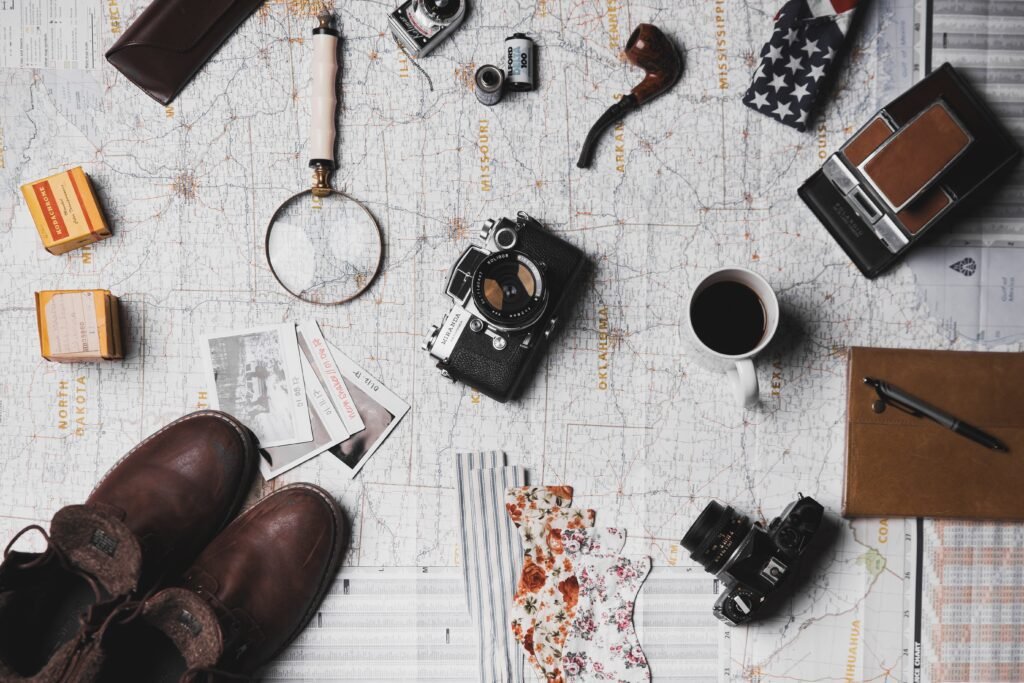

Imagine yourself surrounded by the untouched beauty of the Australian wilderness, the sounds of nature serenading your every step. But amidst the breathtaking scenery, it’s crucial to prioritize your safety while camping. From navigating unfamiliar terrains to encountering wildlife, there are essential safety tips that you must remember for an unforgettable and secure outdoor experience. Let’s explore everything you need to know to ensure a safe adventure in the Australian wilderness.
Planning and Preparation
Research the area
Before heading out to camp in the Australian wilderness, it’s important to conduct thorough research about the area you plan to visit. Learn about the geography, climate, and local wildlife. Understand the terrain and any potential risks or challenges you may face. This will help you better prepare for your camping trip and make informed decisions during your stay.
Check weather conditions
Checking the weather conditions is crucial when planning your camping trip. Australia is known for its unpredictable weather, so make sure to monitor the forecast regularly in the days leading up to your departure. This will help you pack appropriate clothing and gear, and avoid any severe weather conditions that may pose a risk to your safety.
Inform someone of your plans
Before embarking on your camping adventure, it’s essential to inform someone reliable about your plans. Share your itinerary, including the location you’ll be camping in and the dates of your trip. This person should also have a way to reach you in case of an emergency. This precautionary step ensures that others are aware of your whereabouts and can provide help if needed.
Choosing the Right Equipment
Selecting a suitable tent
Choosing the right tent is crucial for your comfort and safety while camping in the Australian wilderness. Opt for a tent that is durable, waterproof, and suitable for the expected weather conditions. Make sure it can comfortably accommodate the number of people in your group and has proper ventilation to prevent condensation buildup.
Choosing a durable sleeping bag
A high-quality sleeping bag is essential to ensure a good night’s sleep and protect you from the elements. Select a sleeping bag appropriate for the temperature range you expect to encounter during your camping trip. Look for insulation materials that will provide sufficient warmth, even if the temperatures drop unexpectedly.
Packing proper cooking equipment
Having the right cooking equipment is essential for preparing meals and staying nourished during your camping trip. Consider lightweight and compact options that are easy to transport. Ensure you have a reliable stove, cooking utensils, and suitable cookware for the type of meals you plan to prepare. Don’t forget to pack a water filter or purifier to ensure access to clean drinking water.


Food and Water Safety
Storing food properly
When camping in the Australian wilderness, it’s crucial to store your food properly to prevent attracting wildlife. Keep your food in secure containers that are resistant to wildlife tampering or store it in a dedicated food cache. Hang the containers at least 4 meters above the ground and 2 meters away from the supporting tree trunk to discourage animals from accessing it.
Keeping water clean and filtered
Maintaining access to clean water is essential for your health and well-being during your camping trip. Carry a water filter or purifier to ensure that any water sources you encounter are safe for consumption. Avoid drinking directly from streams or lakes, as they may contain harmful bacteria or parasites. Always follow the manufacturer’s instructions when using water purification devices.
Avoiding contaminated water sources
Be cautious when selecting water sources in the Australian wilderness. Avoid stagnant water or those near agricultural areas, as they may contain contaminants. Look for running water or natural springs whenever possible, as these sources are generally safer. If you’re uncertain about the water’s safety, purify it using your filtration system or boil it for at least one minute before drinking.
Wildlife Awareness
Recognizing and avoiding dangerous creatures
When camping in the Australian wilderness, it’s important to be aware of the local wildlife, some of which can pose dangers. Familiarize yourself with the species that are common in the area and learn to identify venomous snakes, spiders, and other potentially dangerous animals. Keep a respectful distance and avoid approaching or provoking wildlife to prevent potential encounters.
Securing food to prevent wildlife encounters
To minimize the risk of wildlife encounters, ensure that your food is stored securely and away from your sleeping area. Use bear-resistant containers or hang food bags from trees, following proper procedures to deter animals from accessing your food. By securing your food, you reduce the chance of attracting wildlife to your campsite, creating a safer environment for both you and the animals.


Fire Safety
Observe fire restrictions
Before starting a fire in the Australian wilderness, check for any fire restrictions or bans in the area. Australia is prone to bushfires, and these restrictions aim to prevent accidental fires and protect the environment. If fires are allowed, follow the guidelines provided by local authorities and exercise caution when handling flames and hot coals.
Choose appropriate firewood
When gathering firewood for your campfire, it’s important to choose dry and fallen branches or to use firewood that you have brought with you. Resist the temptation to collect firewood from living or standing trees, as this can damage the environment and disrupt the ecosystem. Collecting firewood responsibly helps preserve the natural beauty of the Australian wilderness.
Extinguish fires completely
Always ensure that your campfire is fully extinguished before leaving your campsite or going to sleep. Pour water over the fire and stir the ashes until they are cool to the touch. It’s also important to check for any remaining embers that could potentially reignite. Neglecting to properly extinguish fires can lead to wildfires and endanger the surrounding wildlife and vegetation.
First Aid and Emergencies
Carry a well-stocked first aid kit
A comprehensive first aid kit is a must-have item when camping in the Australian wilderness. Make sure your kit includes basic medical supplies, such as bandages, antiseptic ointment, pain relievers, and any necessary prescription medications. Familiarize yourself with the contents of your first aid kit and know how to use them effectively in case of any injuries or medical emergencies.
Know basic first aid skills
Along with carrying a well-stocked first aid kit, it’s important to have a basic understanding of first aid. Take the time to educate yourself about common camping injuries, such as burns, cuts, and insect bites, and learn the appropriate first aid responses. Knowing how to properly clean wounds, dress burns, and administer CPR can potentially save lives in emergency situations.
Emergency communication devices
During your camping trip, it’s crucial to have reliable means of communication in case of emergencies. Carry a fully charged mobile phone with an extra battery or a portable charger. It’s also worth considering investing in a personal locator beacon (PLB) or satellite phone for more remote areas where cellphone coverage may be limited. These devices can provide a lifeline in critical situations.


Setting Up Camp
Consider the campsite location
When choosing a campsite in the Australian wilderness, several factors should be taken into account. Look for an area with level ground and good drainage to avoid potential flooding during rain. Consider proximity to water sources and ease of access to hiking trails or points of interest. Also, be mindful of any camping restrictions or permits that may apply to the chosen location.
Pitch your tent on level ground
To ensure a comfortable and safe night’s sleep, pitch your tent on level ground. Inspect the area for rocks, sticks, or other objects that could puncture your tent floor or cause discomfort. Clear away any debris, such as branches or stones, that may hinder the setup or create potential hazards inside your tent. Taking the time to properly level and prepare the campsite will enhance your overall camping experience.
Clear the area of hazards
Before settling into your campsite, carefully inspect the area for any potential hazards. Remove any sharp rocks, broken glass, or other objects that could cause injury. Check for low-hanging branches or dead trees that may pose a risk during strong winds. By eliminating hazards, you create a safer environment for yourself and others, reducing the chances of accidents or injuries.
Personal Safety
Inform yourself about local hazards
Familiarize yourself with the local hazards specific to the area you’ll be camping in. Research any potential dangers, such as venomous plants or wildlife, flash floods, or extreme weather conditions. Understanding the risks allows you to take appropriate precautions and adapt your camping plans accordingly. Stay informed and be prepared for any challenges the environment may present.
Dress appropriately for the environment
When camping in the Australian wilderness, it’s crucial to dress appropriately for the environment. Layering clothing is a good strategy, as it allows you to adjust your attire to changing weather conditions. Wear lightweight, moisture-wicking fabrics that provide protection against the sun’s harmful UV rays. Don’t forget to wear sturdy, comfortable footwear appropriate for the terrain you expect to encounter.
Use sunscreen and insect repellent
Protecting your skin from the harsh Australian sun and pesky insects is essential for your well-being. Apply sunscreen with a high SPF before heading out and remember to reapply regularly, especially if you’re sweating or swimming. Additionally, use an effective insect repellent to ward off mosquitoes, ticks, and other biting insects that may carry diseases. Taking these simple precautions contributes to a safe and enjoyable camping experience.


Navigation and Orientation
Carry a map and compass
Even if you’re familiar with the area you’ll be camping in, it’s always wise to carry a detailed map and a reliable compass. These tools can help you navigate the wilderness and find your way in case of unexpected circumstances, such as getting lost or encountering impassable terrain. Familiarize yourself with the map and compass before your trip so that you can utilize them effectively if needed.
Familiarize yourself with the area
Before venturing into the Australian wilderness, take the time to familiarize yourself with the area where you’ll be camping. Study the terrain, identifying landmarks and features that can help with orientation. Take note of any notable trails, water sources, or potential hazards. This knowledge will increase your confidence and enable you to navigate the area more safely and efficiently.
Follow marked trails and signs
When exploring the Australian wilderness, it’s generally safer to stick to marked trails and follow signs provided by park authorities. These routes are usually maintained and regularly checked for potential hazards. Deviating from designated paths increases the risk of getting lost or encountering unfamiliar terrain. By adhering to marked trails, you can enjoy the beauty of the wilderness while minimizing potential safety concerns.
Respecting the Environment
Follow Leave No Trace principles
When camping in the Australian wilderness, it’s essential to follow the principles of Leave No Trace. This means minimizing your impact on the environment and leaving the natural surroundings as you found them. Avoid littering, respect wildlife habitats, and minimize noise pollution. Practicing Leave No Trace ensures the preservation of the wilderness for future generations to enjoy.
Dispose of waste properly
Proper waste disposal is paramount when camping in the Australian wilderness. Always carry garbage bags and pack out all your waste, including food scraps, empty containers, and toilet paper. Dispose of your waste in designated trash cans or bring it back to civilization for proper disposal. Never leave trash behind, as it can harm wildlife and spoil the pristine beauty of the natural surroundings.
Respect wildlife and their habitats
When camping in the Australian wilderness, it’s important to respect the wildlife and their natural habitats. Admire animals from a distance and avoid feeding or approaching them. Keep noise to a minimum to avoid disturbing their natural behavior. It’s also crucial to avoid damaging or removing vegetation, as this disrupts the ecosystem. By respecting the wildlife and their habitats, you contribute to the preservation of the Australian wilderness.
By following these essential safety tips, you can have a safe and enjoyable camping experience in the Australian wilderness. Remember to plan and prepare, choose the right equipment, practice food and water safety, be aware of wildlife, prioritize fire safety, carry a well-stocked first aid kit, set up camp responsibly, prioritize personal safety, navigate effectively, and respect the environment. With proper preparation and awareness, you can fully embrace the beauty and serenity of the Australian wilderness while staying safe throughout your camping adventure.


Leave a Reply